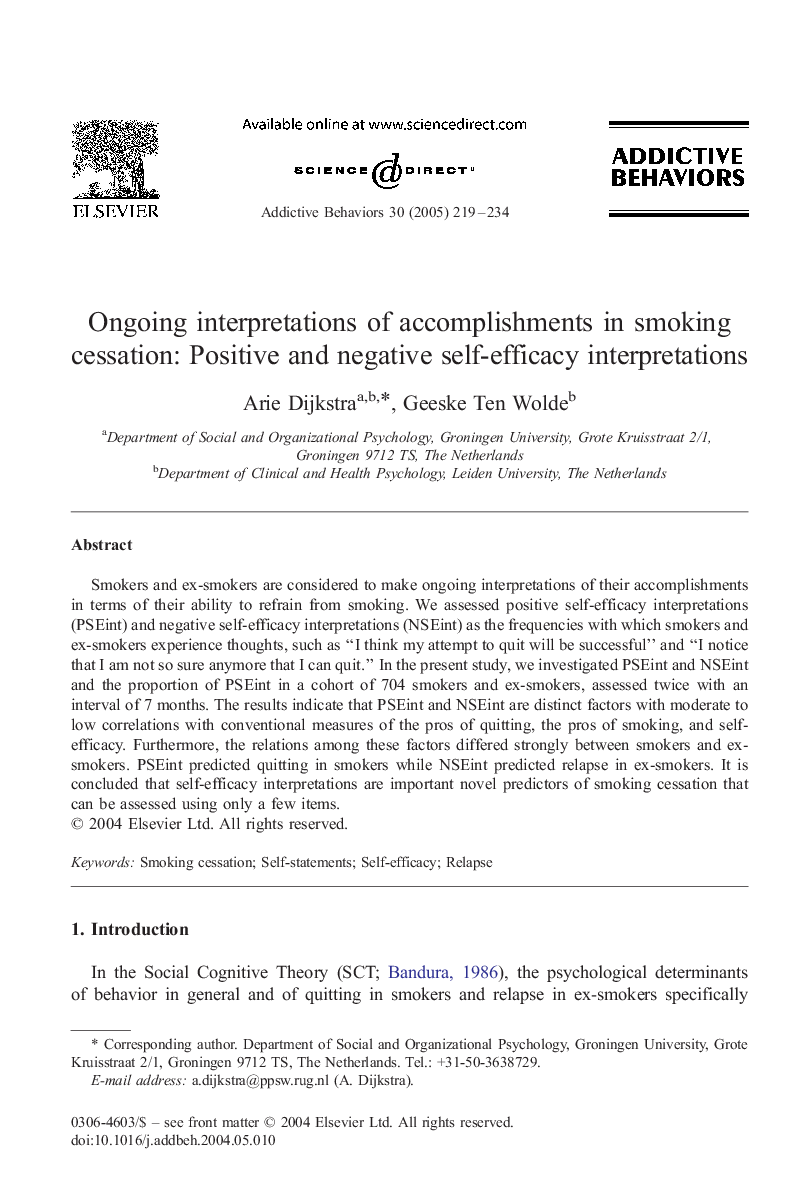| Article ID | Journal | Published Year | Pages | File Type |
|---|---|---|---|---|
| 10443583 | Addictive Behaviors | 2005 | 16 Pages |
Abstract
Smokers and ex-smokers are considered to make ongoing interpretations of their accomplishments in terms of their ability to refrain from smoking. We assessed positive self-efficacy interpretations (PSEint) and negative self-efficacy interpretations (NSEint) as the frequencies with which smokers and ex-smokers experience thoughts, such as “I think my attempt to quit will be successful” and “I notice that I am not so sure anymore that I can quit.” In the present study, we investigated PSEint and NSEint and the proportion of PSEint in a cohort of 704 smokers and ex-smokers, assessed twice with an interval of 7 months. The results indicate that PSEint and NSEint are distinct factors with moderate to low correlations with conventional measures of the pros of quitting, the pros of smoking, and self-efficacy. Furthermore, the relations among these factors differed strongly between smokers and ex-smokers. PSEint predicted quitting in smokers while NSEint predicted relapse in ex-smokers. It is concluded that self-efficacy interpretations are important novel predictors of smoking cessation that can be assessed using only a few items.
Related Topics
Life Sciences
Neuroscience
Behavioral Neuroscience
Authors
Arie Dijkstra, Geeske Ten Wolde,
